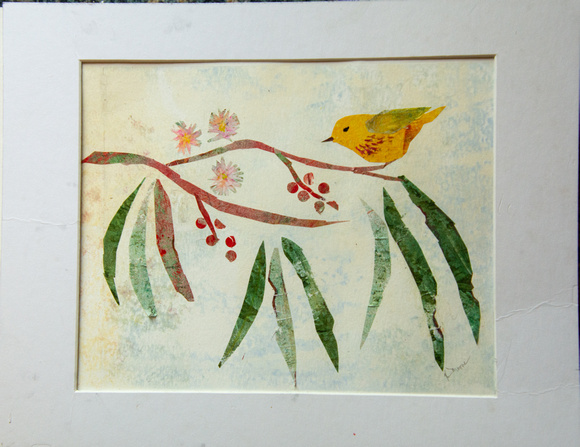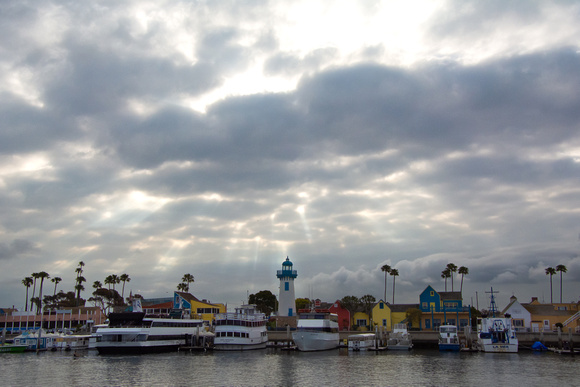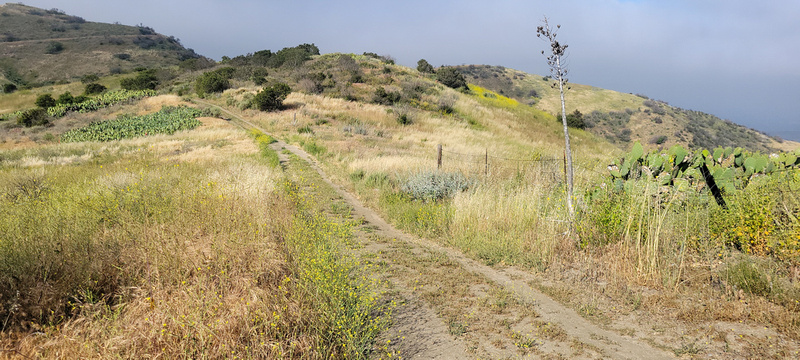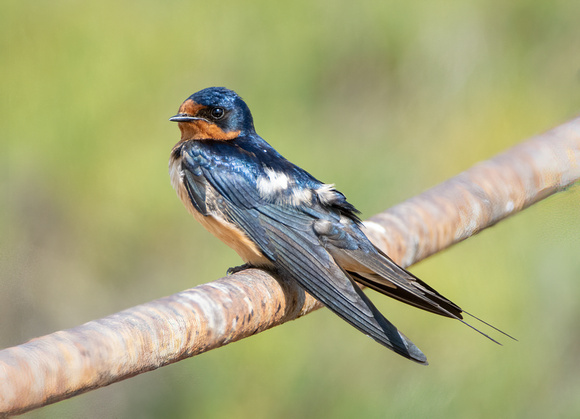Sights of May 2022 - Understanding Migration
My husband has a t-shirt that he likes to wear that says, "I can explain it to you, but I can't understand it for you". It has taken me a while to really understand some of the things I have been taught. One of those is bird migration. We are all taught that birds migrate in the spring and the fall. They go north for the summer and then south for the winter. That's a nice generalization, however I have come to understand that it is far more complex. Only by going out most mornings, and really observing what's happening, have I come to understand the complexity better. Let's start with the fact that some birds are resident year round and don't migrate. I have seen so many Black Phoebe and Orange-crowned Warbler fledglings begging, and also a few House Wrens and Hutton's Vireos. Yet other birds have some part of their population that are resident and some that migrate. Canada Geese and Mallards are like that. You can always find them here, but their numbers swell in the winter from the migrating populations.
Migration is not a random thing with birds migrating anytime within the three months of spring and fall. First of all, the calendar months we call spring and fall are not known to birds; they just know when it's time to go. For example, Rufus Hummingbirds typically migrate north in our area in March, but you might see them in the last weeks of February. Some shorebirds might start migrating south in mid-July.
Different species migrate at different times and usually in groups over a short time window. Violet-green Swallows pass through quickly. Did you miss those Olive-sided Flycatchers? Too late, you have to try again. If you don't go out during that short window, you will miss them and have to wait until they pass through with the reverse migration. Willow Flycatchers don't show up until May. I hit it just right one day and saw trees filled with Western Tanagers and Hermit Warblers. I went back four days later to the same place, and there were many fewer birds.
North and south are relative terms. Mountain birds may come down to lower elevation in winter and go back up in summer. Some shorebirds winter in our area and then fly north. Orioles and Yellow Warblers fly south to South America in the winter and north to our area in the summer. We are their north.
Birds may choose slightly different routes in different directions and in different years. Rufus Hummingbirds follow a more easterly route when flying south, so we only get one opportunity a year to see them. Food source availability will also alter birds' migration patterns. Occasionally a species will have an irruptive year. An irruptive migrant is a species that moves to a different location in very large numbers. This year it was it was Swainson's Thrushes. I have seen more this year than I had seen in my life.
In spring migration, the birds are singing and they are in their finest plumage or at least coming into it. In the fall there are more birds because there are many young birds flying with the flock. The plumage of the adults may be worn and faded.
At the end of migration there are a few stragglers and late comers. This is also the time you are likely to see a local rarity. These are the birds lost in migration and may come up the wrong coast. This month I saw the lost East Coasters: Yellow-throated Vireo, Rose-breasted Grosbeak, and Baltimore Oriole.
There is so much more to know and understand, and the rest of my life to learn it.
I went on a pelagic birding trip out of Marina del Rey. The day started out gray and slow. There were not many birds. But after a few hours, the trip leader spotted a Horned Puffin. This was the first one seen in LA County since 2005. The mood on the boat was instantly uplifted with some people high-fiving and giving happy dances. A couple of Northern Fulmars followed the boat begging for scraps. I guess they recognize fishing boats, but today we weren't fishing, only watching birds. It did give an opportunity for good photos of them. We saw several Scripps's Murrelets, Cassin's Auklets, Pomarine Jaeger, Pink-footed, Sooty, and Black-vented Shearwaters, Common Murres, and a few flocks of Red-necked Phalaropes. It turned out to be a good trip after all. So good in fact, that I went out on another mini-pelagic the following weekend out of Redondo Beach to look for more Puffins. No luck the second time. I did see Risso's Dolphins, so that was at least my consolation prize.
After two and a half years, since the pandemic, I was finally able to go back to my monthly Butterfly Survey with Irvine Ranch Conservancy. I was greatly excited to go back, but also had a little trepidation. I thought I had gotten out of shape and was concerned that I hadn't done a three and a half to four mile hike in a long time. But the weather wasn't too hot, and I had no trouble at all. It was great to see old friends. Just as we have been recovering from the pandemic, the land was recovering from its own trauma. Sometime during the last two years, a fire had ripped through the area hopscotching, hitting some trees and bushes while missing others. We have also had a few years of drought. Now the area is quite brown and dry with dead trees and shrubs throughout the landscape. But it is still spring and so, with the little rain we did have, there were wildflowers poking up through the dry grasses. We had many butterflies, but it was interesting to note a different mix than in the past with Orange Sulphur butterflies quite abundant and no Behr's Metalmarks nor California Ringlets, which were always abundant in Mays past. Also, many of the butterflies were quite small indicating that the caterpillars had less to feed on before going through metamorphosis. With such dry grasses, it looked more like September than May. Fire season is now year-round.
The bird survey out on the Los Cerritos Wetlands was pleasant. I think that is the best description. The highlight was young Barn Swallows. Aside from that, nothing noteworthy, but I took a few photos for documentation.
Happy Nature Walks. Stay safe.
Follow me on Facebook: https://www.facebook.com/KimMooreNaturalist/
Watch the slideshows or click on the links to look through at your own pace. Links open in a new tab.
Local Stuff: https://kimssight.zenfolio.com/new_may-2022
Pelagic Trips: https://kimssight.zenfolio.com/pelagic_trip_may_2022
Irvine Ranch Conservancy Butterfly Survey: https://kimssight.zenfolio.com/irc_may-2022
Los Cerritos Wetlands Bird Survey: https://kimssight.zenfolio.com/hellman_may-2022



